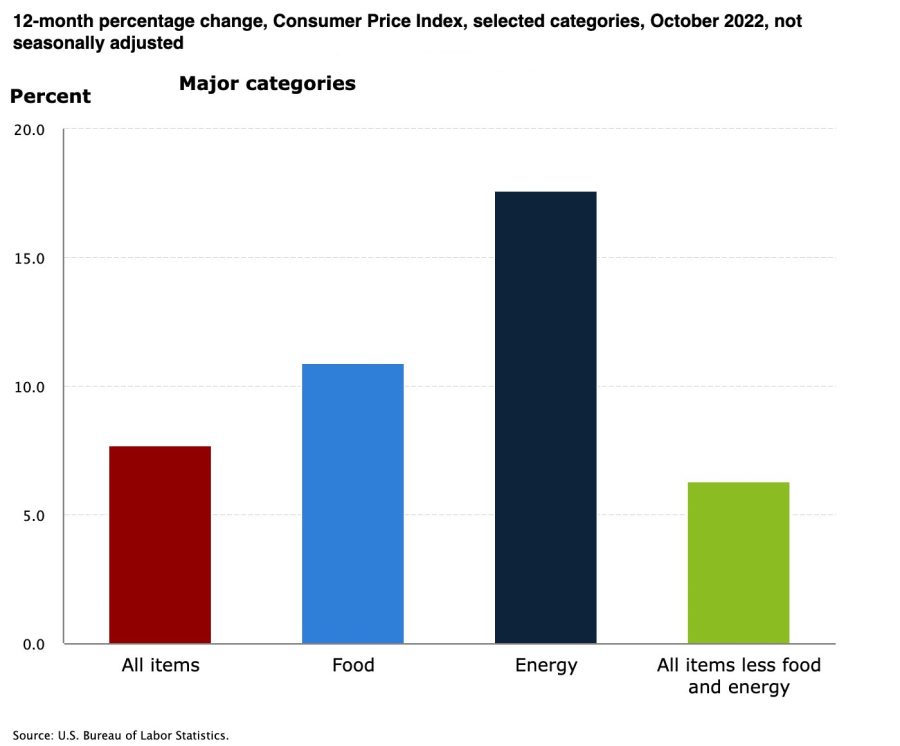Inflation cools more than expected in October
November 18, 2022
Inflation eased more than analysts expected in October’s consumer price index report on Nov. 10.
In its index report, the U.S. Bureau of Labor Statistics measures the monthly change in prices paid by consumers. The index is calculated as the weighted average of prices for goods and services that are representative of aggregate consumer spending. This makes it a good way to measure inflation and deflation in the country.
The month-on-month increase for inflation was 0.4%, while analysts expected 0.6%. The year-on-year increase was 7.7%, against the 7.9% that analysts expected.
For goods and services that would have cost $100 in October 2021, they would cost $107.70 in October 2022 on average.
Shelter, food and energy costs remained high as major contributors to inflation. The rising costs are attributed to ongoing global factors such as supply chain issues and Russia’s invasion of Ukraine.
Fuel prices rose up 19.8% from September and up 68.5% year on year. Shelter expenses, which includes rent, rose up 0.8% from September, 6.9% year on year.
Prices for used vehicles declined 2.4%, helping inflation figures go on a downtrend. Month-on-month prices on apparel fell down 0.7%, and month-on-month prices for medical care services fell by another 0.6%.
These are good signs for the economy, showing that inflation is ticking at a lower rate.
Some analysts viewed the index report favorably, with the markets evidently welcoming the report as the Dow Jones Industrial Average rose up to 1,201 points; 3.7%. The 2-year Treasury yields declined by 0.3% to 4.33%.
“It’s pretty clear that inflation has definitely peaked and is rolling over,” Mark Zandi, who is chief economist at Moody’s Analytics, told CNBC. “All the trend lines suggest that it will continue to moderate going forward, assuming that nothing goes off the rails.”
Others urged for a high amount of caution to this report, saying that a decline in a commodity’s inflation rate does not signify that the prices of that commodity are falling. A decline only implies that prices are not rising as fast as analysts expected.
“One month of data does not a victory make,” Mary Daly, who is the president of the Federal Reserve of San Francisco, said during a conference at the European Economics and Financial Centre. “I think it’s really important to be thoughtful that this is just one piece of positive information, but we’re looking at a whole set of information.”
Daly added that the Fed has to stay determined to bring down inflation to 2%.
“That’s our goal, that’s what Americans depend on, and that’s what we’re committed to doing,” Daly added. “So we’re going to continue to adjust policy until that job is fully done.”
Consumer spending will likely tick up again, affecting the index to trend upward as the winter holiday season comes. People will spend money on travel, food and gifts. All of these will affect key components of the index, including shelter, fuel and apparel prices.
The Federal Reserve might keep hiking interest rates until it reaches its base target for inflation at 2%. The Fed must be cautious in its approach, as its push to lower inflation may not be enough to avert a recession.







